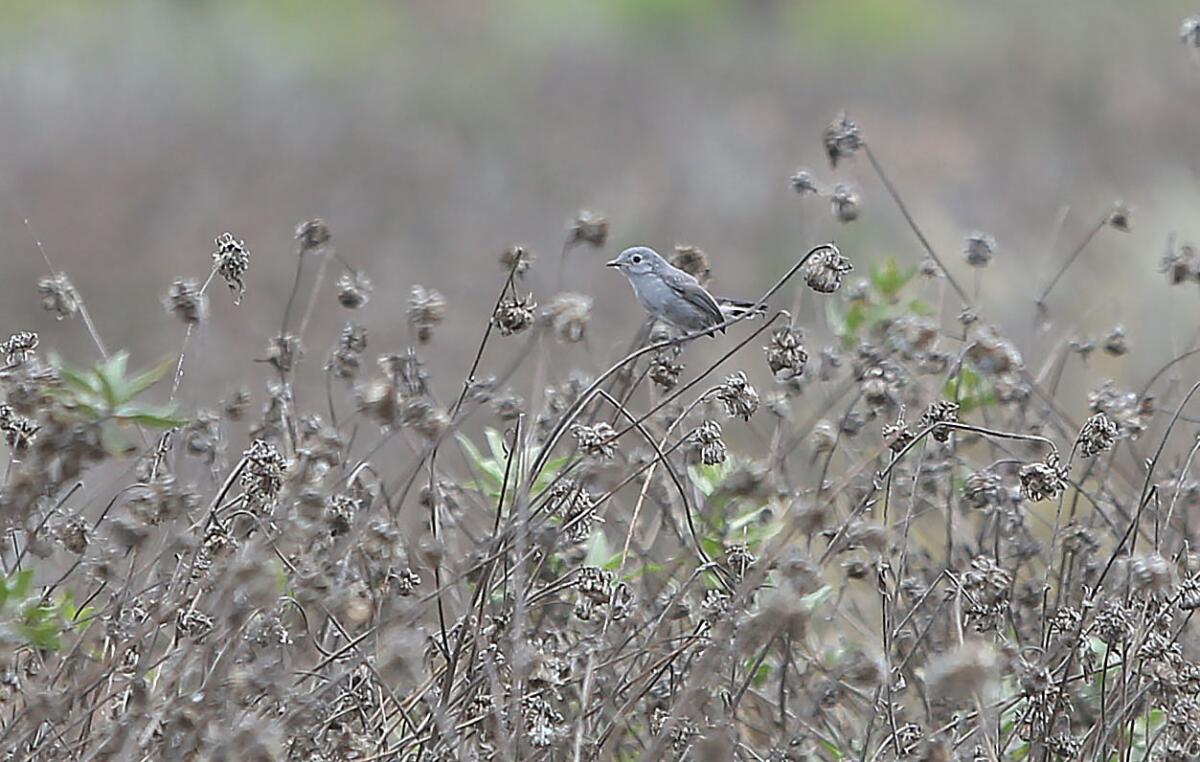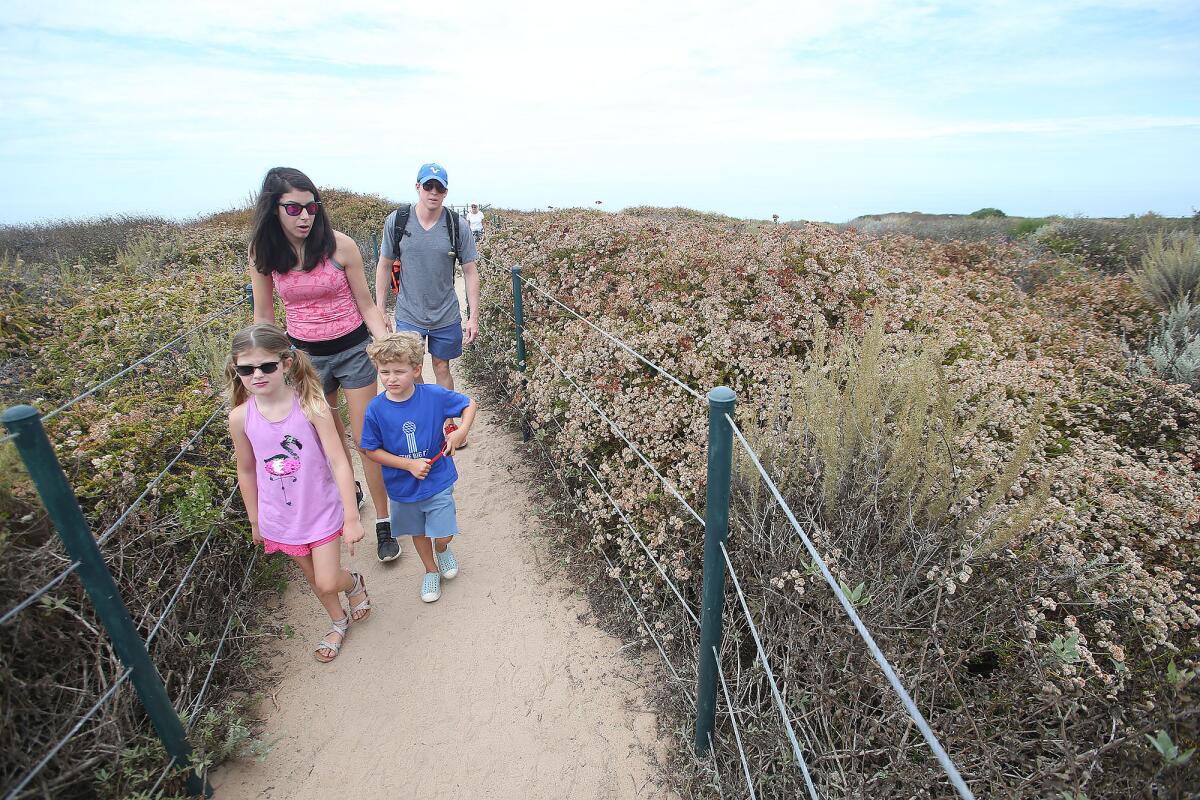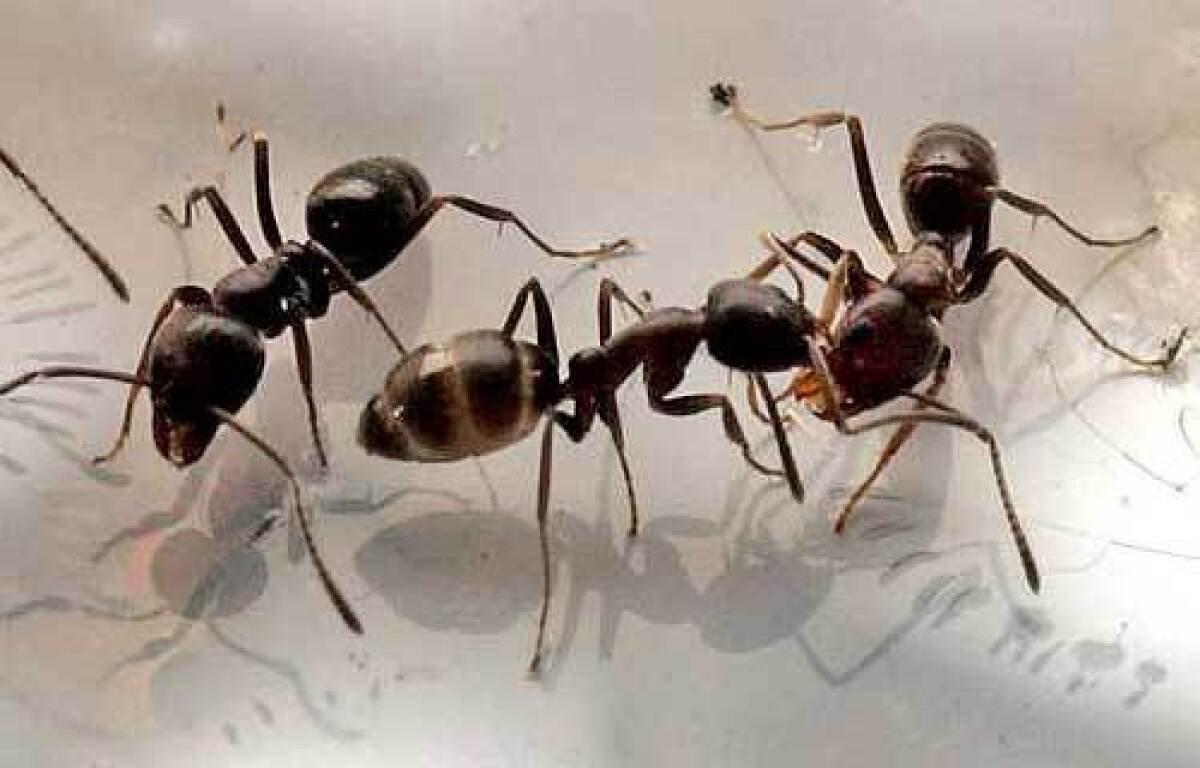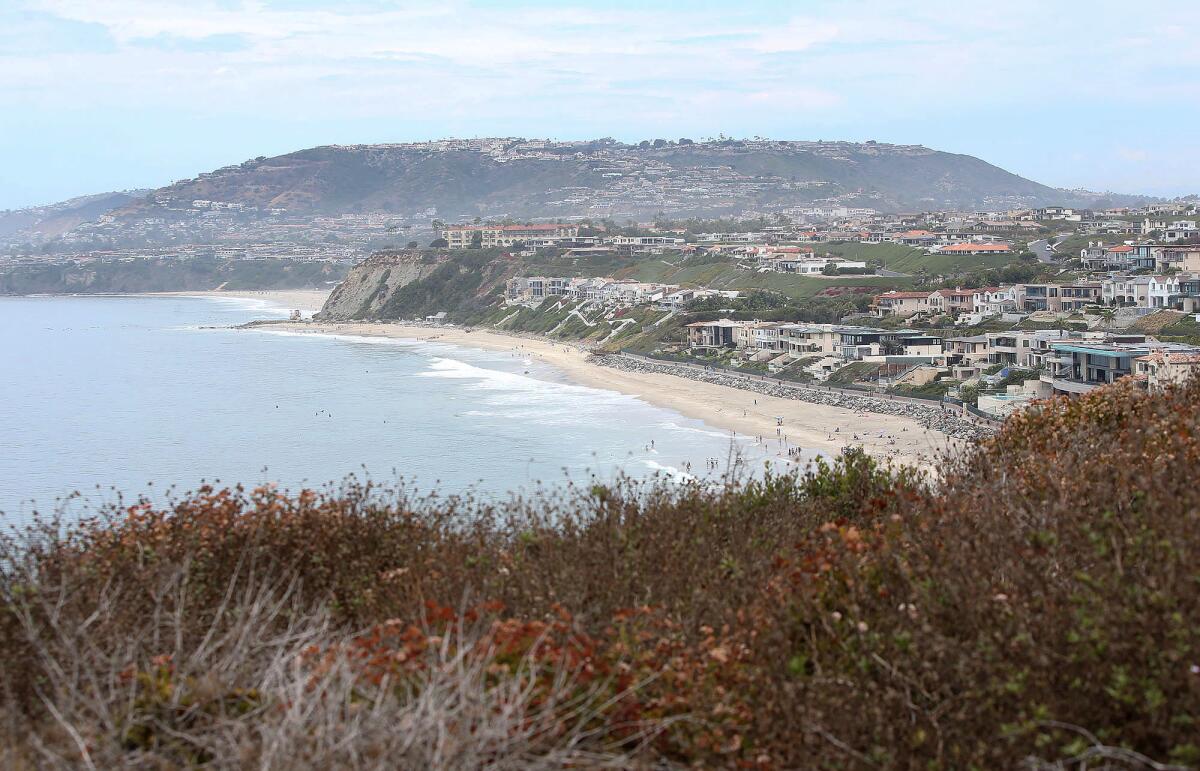The Dana Point Headlands is setting an example for how conservation can be done in urban areas

As the sun sets on one of Southern California’s last undeveloped promontories, a mouse that weighs slightly more than a nickel steps out of its burrow.
With twitching whiskers and staccato-like movements, the nocturnal rodent searches for seeds and grain to store in its cheek pouches. When inflated to capacity, the mouse’s head nearly dwarfs its body.
The Pacific pocket mouse is the smallest mouse species in North America. It was once considered extinct, a casualty of increased development, until a small population was discovered in the Dana Point Headlands in 1993.
Though it was added to the federally endangered species list in 1994, there are only four known wild populations of the mouse — two at Camp Pendleton, one at the Laguna Coast Wilderness Park and the one at the Dana Point.
“We are striving for a recovery goal, but that is pretty far off,” said Korie Merrill, who manages the Dana Point preserve.
Merrill, a preserve manager for the Temecula-based Center for Natural Lands Management, estimated that there are 12 to 27 Pacific pocket mice in the 60-acre headlands. Due to the difficulty of detecting the small mammals, there may be more.
The Dana Point Headlands preserve, half of which is owned by the center and half by the city, is home to various rare and endangered species.
There are about 110 native plants on the property, 15 of which are on the California Native Plant Society rare plant inventory. More than 175 animal species visit the site, including long-tailed weasels, bobcats, gray foxes and roadrunners.
“I think that the headlands are unique in Southern California conservation,” said David Thoreau, board director for CNLM. “It’s also one of the most beautiful locations in Southern California.”

Another federally threatened species, the Coastal California gnatcatcher, lives on the preserve. The tiny songbird can be seen hopping between branches of coastal sage scrub, letting out its characteristic call, which sounds like a cat’s meow.
About 10 to 13 breeding pairs nest in the preserve.
Merrill said the gnatcatcher is doing much better than the pocket mouse. The bird thrives wherever there is coastal sage scrub — their main food source — and the preserve is full of it.
Part of Merrill’s many duties tending to the land is making sure invasive plants and animals don’t negatively impact the natives. One of these invaders, Argentine ants, impact the Pacific pocket mouse in a number of ways.

The ants are believed to eat injured or immobilized mice. They also reduce the presence of pollinators in the area by disrupting the pollination process. This reduces the available food for the mice.
Merrill, who became an expert on the ants while attaining a master’s in entomology from UC Riverside, said this is just one of the many challenges she has to contend with on the Dana Point preserve.
Making sure that the public behaves appropriately on the site is another issue.
“People need to stay on trail,” Merrill said. “Many go off and crush vegetation and then crush mice burrows or gnatcatcher nests. People smoking poses risks. Bringing dogs on the preserve is a big one. Wildlife see dogs as predators. We don’t allow them on the preserve to protect the species.”

The work isn’t easy, especially with such a small team. Merrill has the help of only two part-time rangers.
“We are short-staffed, but I am not sure that is different than any other open space or preserve,” Merrill said. “I guess in general conservation is a sector that doesn’t get a lot of money. You get a small amount of money, and you do what you can with it. That’s what we are doing.”
It may not get easier.
There are plans for a hotel to be built within the next few years right next to the preserve, which is already couched between urban areas.
“So there is the other risk of increased trash, which brings ravens, which are predators to gnatcatchers,” Merrill said. “There will probably be increased irrigation and lighting, which is not great for gnatcatchers or pocket mice. Also, there may be an increase in Argentine ants with more trash.
“This work is so important because this really is one of the last areas along the coast that hasn’t been developed. You have this coastal bluff area that has the Pacific pocket mouse, the gnatcatcher and a host of other species and rare coastal plants that you don’t see anywhere else because those areas have been developed. We’ve maintained high biodiversity in this area. It shows conservation can be done in urbanized areas.”
To learn more about the Center for Natural Lands Management, visit cnlm.org.
All the latest on Orange County from Orange County.
Get our free TimesOC newsletter.
You may occasionally receive promotional content from the Daily Pilot.




